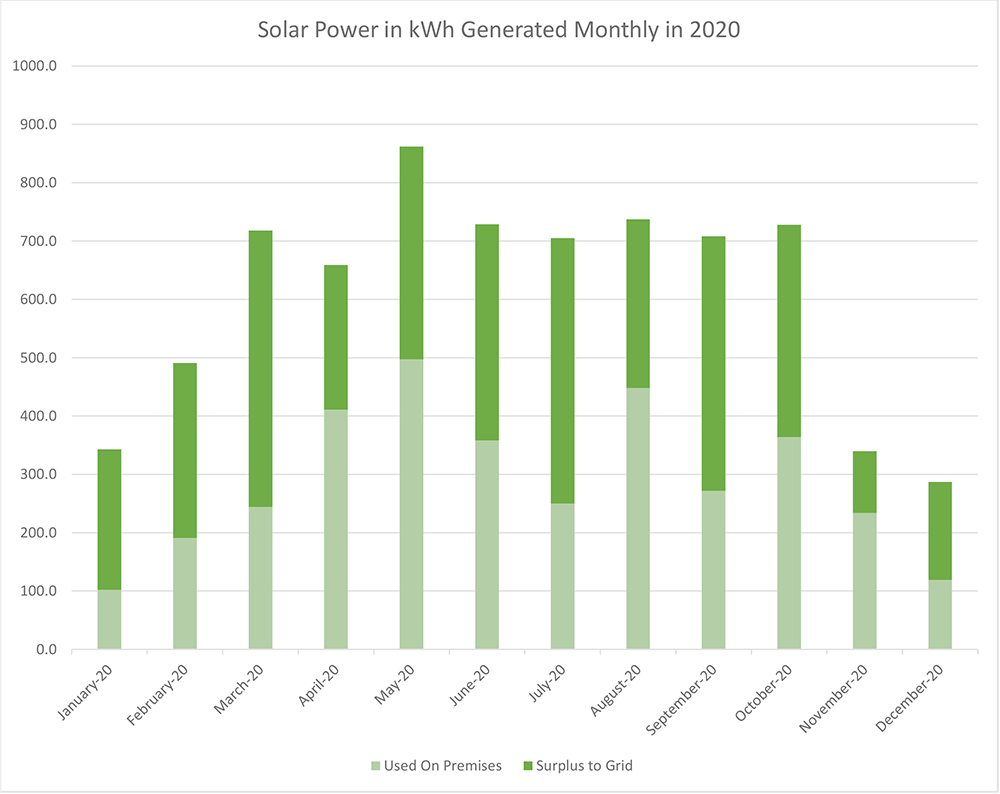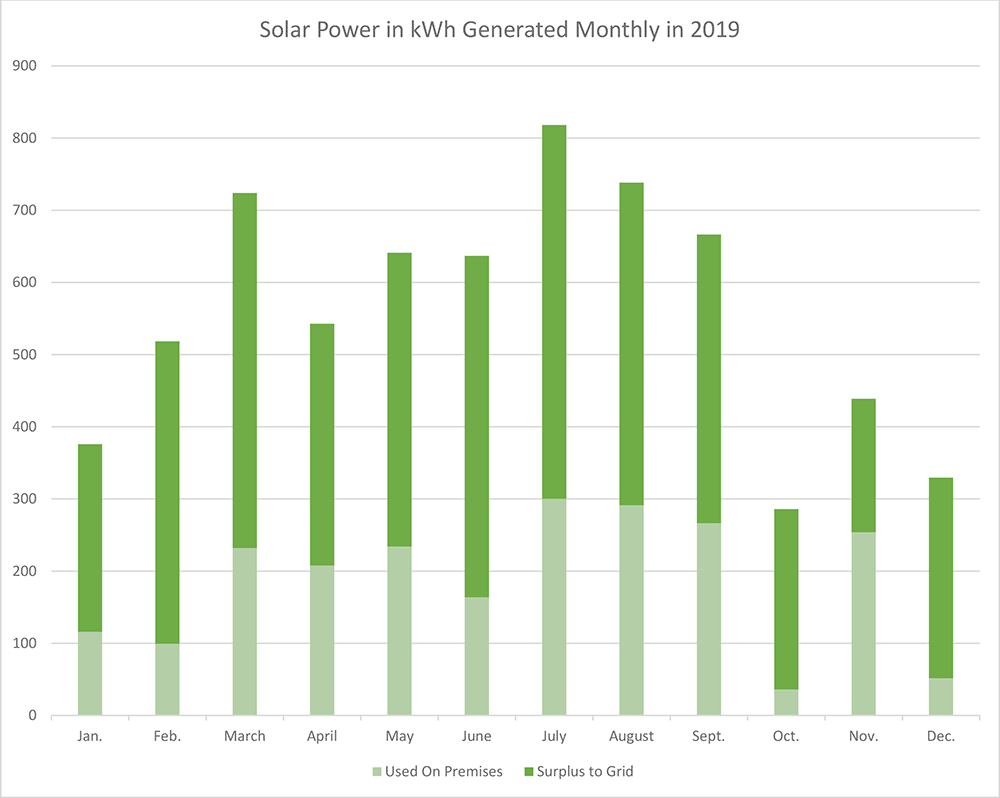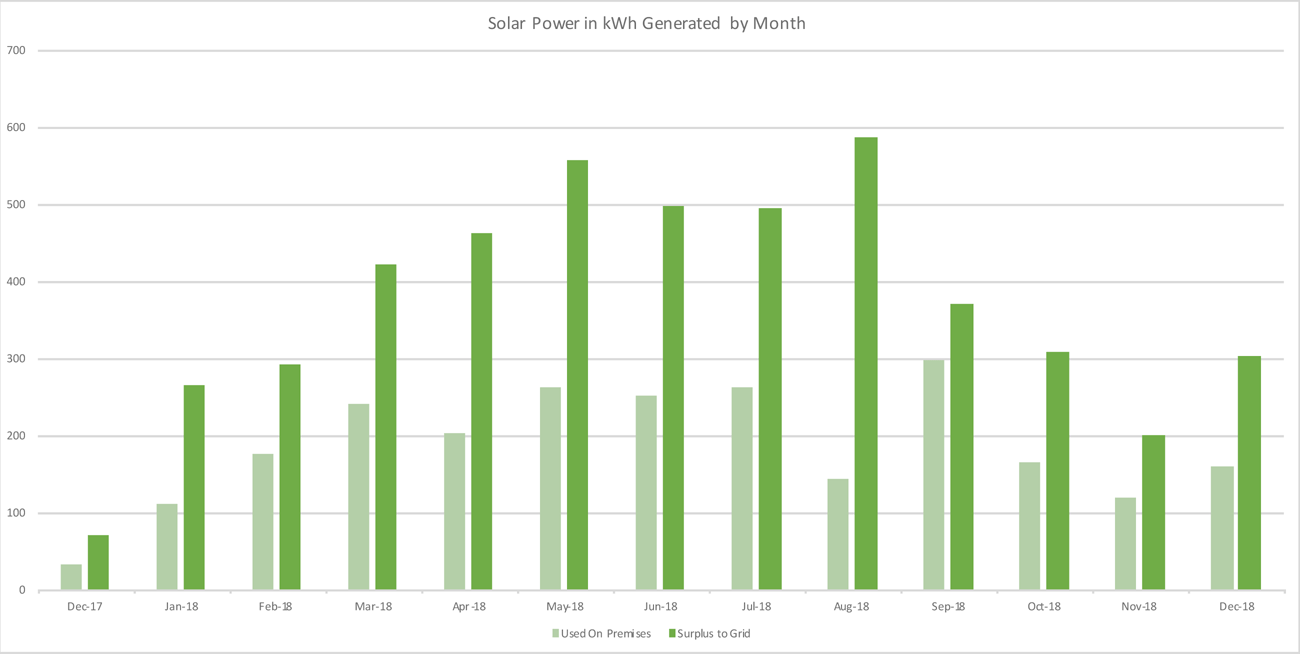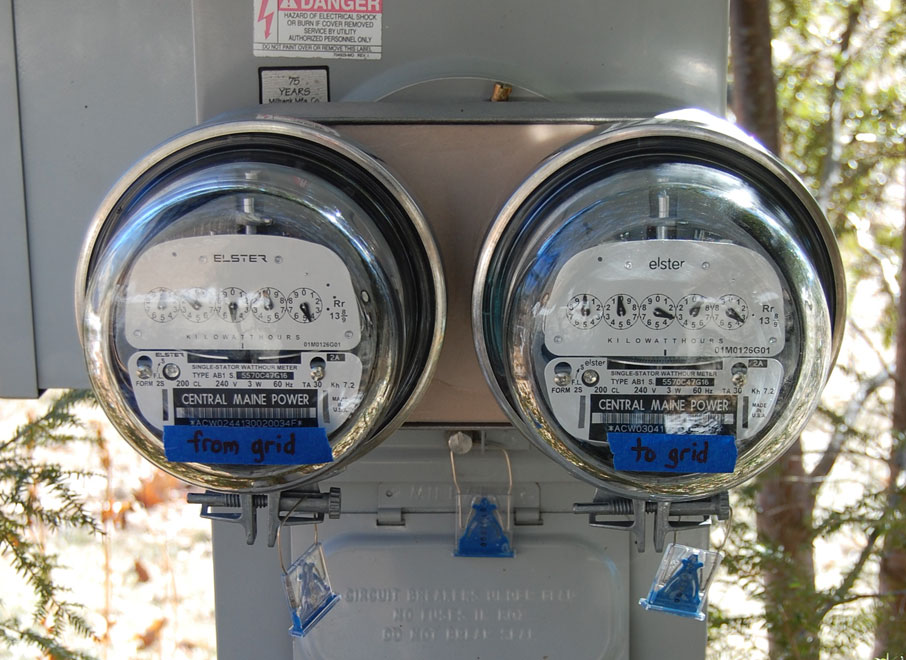Hard to believe it’s been over three years since the system went online. Let’s have a quick look at the numbers for 2020. We cranked out 7,125 kWh last year, our best year yet and a 5% increase over 2019. The summer drought, which lasted until late September, probably had something to with that—definitely fewer gray days than normal.
We consumed 3,490 kWh on premises, a big jump from 2019 that can be attributed to the electric car we acquired last year. 3,635 kWh went to the grid, a significant drop from the previous two years again owing to charging the car battery. We saved $1,122.29 on electricity costs in 2020, bringing the lifetime cost savings to $3,306.46, or 20% of our investment. Depending on the price of electricity and other factors, we should recoup our investment around 2030.
Just like in 2019, May was the biggest month of production: 861.9 kWh. As usual, December brought the least production at 295.1 kWh. Interestingly, production was exceptionally high in October, matching June and just behind August. October can often bring gray skies and rain, especially later in the month, but not so much in 2020.
As in past years the system required almost no maintenance—just monitoring and occasional battery checks. Very pleased about that.
Looking forward to another great year in 2021.





